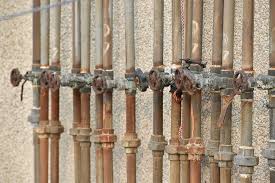
Most pipes are constructed out of tough, professional-grade material that can handle general environmental conditions. However, when harsh weather arrives, some pipes can develop minor or major problems that can impact a plumbing system’s overall performance. If you want to protect all of your delicate pipes, there are a few things that you must consider.
Run the Tap Slowly Before a Freeze
During very cold days and nights, arctic air can gradually freeze the water that flows through pipes. If the water becomes a solid within a delicate pipe, pressure will build up. When enough tension generates around the walls in a pipe, the housing will burst. The easiest way to stop this event is by running the tap slowly. This strategy is effective because water that’s moving can’t freeze.
In order to avoid low water pressure problems, you should always follow the rules that are set by your local water supplier. If the company that supplies your water issues a statement about low pressure problems throughout your neighborhood, you should implement alternative procedures to prevent a hard freeze within your pipes.
Wrap the Pipes With Insulation
By wrapping an insulated material around each exposed pipe, you’ll decrease the effects of arctic wind. If cold air blasts on an insulated sleeve, a pipe’s temperature won’t drop because the insulation will help the metal housing maintain a practical temperature that’s above the freezing point.
Use a Rubber Lining
Rubber lining is designed for pipes that are used to transfer water to tanks. This solution is cost-effective since it prevents corrosion and abrasion problems that can damage the surfaces within a pipe.
These tactics can simplify the process of protecting a plumbing system in a risky climate. You can buy pipe insulation and rubber lined pipe supplies from a local hardware store.
